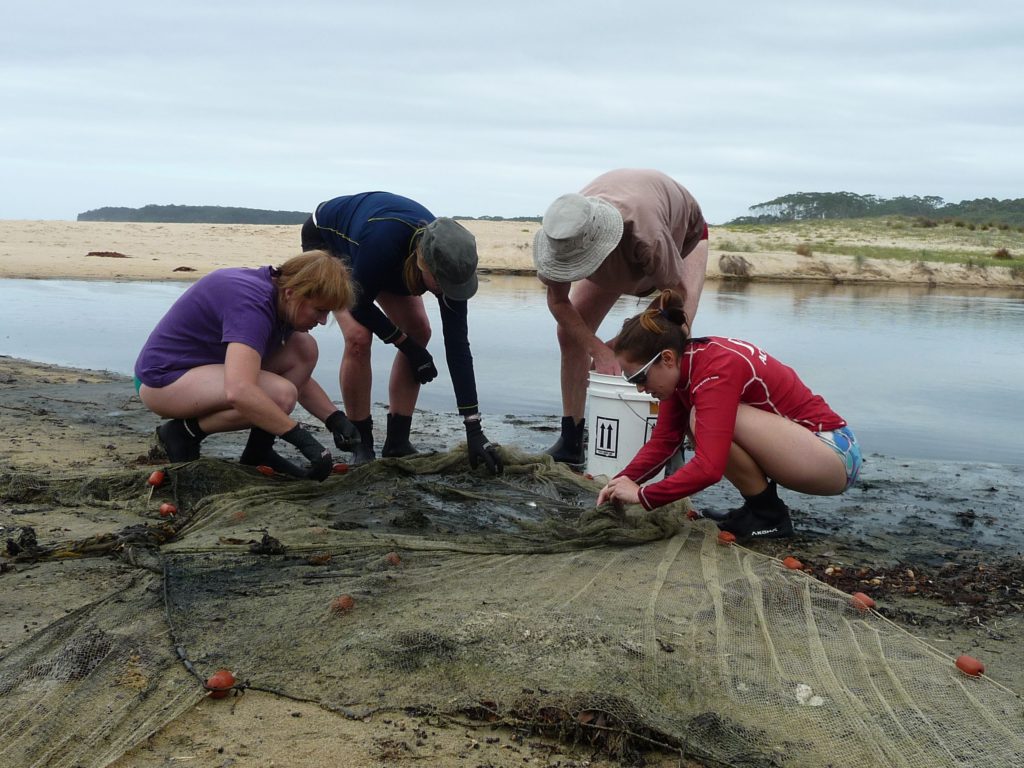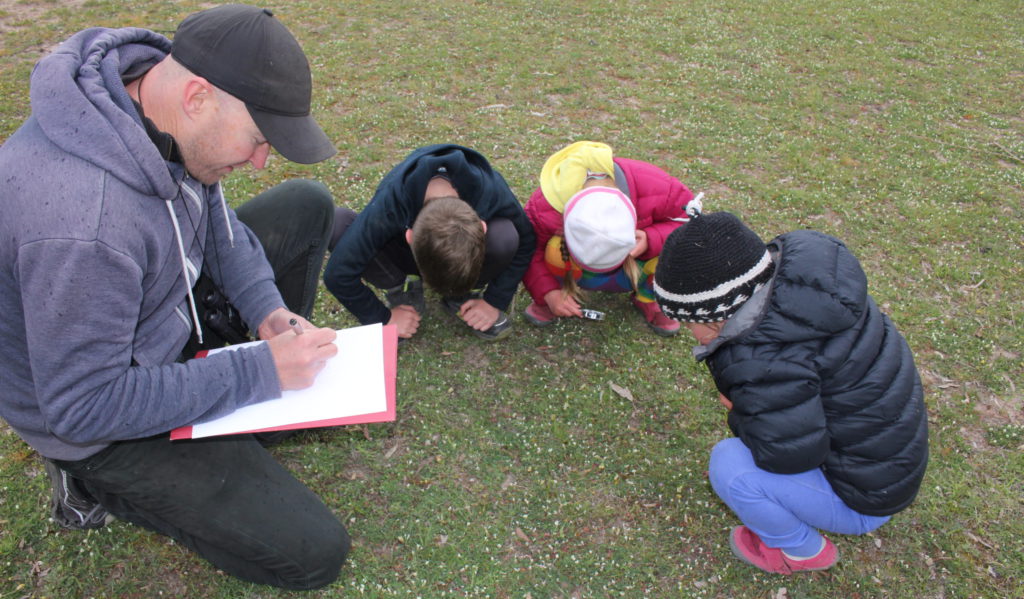Each program is different and the specifics will greatly depend on the individual requirements of your project, however, here are some general guidelines to getting started.
The core of your program
Your goals
- What are you trying to achieve? – Are there any existing programs doing the same thing? If someone is already doing it, don’t try and complete against them, instead consider trying to link your two programs and make both of them stronger! You will benefit from their experience and they will benefit for increased numbers. Citizen science is about uniting the community in the name of science. Check for active citizen science programs with ACSA’s Project Finder.
- Do you have a scientists or field expert involved? – Citizen science can’t compete with the expertise of trained scientists, but nor can scientific research compete with the accessibility and scale offered by citizen science. To achieve the best and most reputable results from citizen science, make sure you are consulting with trained professionals. Use methodology designed by scientists, performed by citizens.
- How will your data be used? – The role of science is to produce data that is going to be used by scientists, field experts, state and federal leaders etc. to help with research or to influence environmental decision making.
- How will you analyse your success? – Make sure you are prepared to monitor every aspect of your program such as community engagement, education, costs, events, problems encountered, data quality, data analysis and more. Write an end of year report to analyse your success and work towards improvement in the future.

Your data
How will your data be recorded and how will citizen scientists submit their data to you? There are a number of different options.
- Face to face – If you are all present at the same event you can use paper records and collect everything in at the end.
- Remotely – If your citizen scientists are collecting data remotely, you will need to think about how you are going to manage this. There are some free options available that may suite your needs such as Airtable or GoogleForms. Or you may want to invest in something more personalised if you have funding available, such as an App.
- Analysis – Have a think about how you are going to analyse your data. Will you need help with this or is it something you will be able to manage alone?
Funding
If you haven’t yet sourced funding for your project, there are a umber of avenues you can go down.
- Grants – Annually there are lots of grants available for community engagement and citizen science projects. Keep an eye of for relevant funding and make sure you apply with lots of time to spare in case you need to collect letters of support or other evidence.
- Sponsorship – You may be able to receive help from a corporate sponsor. Is there an organisation who would be particularly invested in your research or its outcomes? Sponsorship is a two way partnership. Have a think about what you can offer to your sponsors and how you can make it worthwhile for them to sponsor your program.
Your citizen scientists
Before you reach out to the general public, make sure you have a concrete plan of all the activities that are going to take place.
- How many citizen scientists do you need to get started?
- Do you need to find people with an existing set of skills?
- How much input do you need from your volunteers; hours, weeks, years?
- What kind of activities will they be doing to collect data?
- Are there any safety concerns or risks involved in these activities?
- Will you need to supervise these activities?
- Do you need to organise any group events?
- Do you need insurance?
- How will you train your citizen scientists?
- How will you monitor them and make sure the data they collect is reliable?
- How do you plan to communicate with them?

Paperwork
Managing volunteers, conducting research, planning events and activities, acquiring funding; all of these activities may require certain paperwork.
- Your organisation – If you are planning on receiving funding, your group will need to be registered as a legal entity and be permitted to hold funds. If this is not the case, you will need to request auspicing services from another organisation who can help you apply for funding and look after the funds on your behalf.
- Code of conduct – before you engage volunteers, it is a good idea to have a code of conduct in place that everybody can be made aware of.
- Insurance – if you are engaging volunteers in events and activities you may need insurance. If you have any equipment, it would also be wise to get contents insurance.
- Safe Work Method Statement – when engaging volunteers in on-ground work you will need to have a SWMS document completed to identify hazards and analyse risks associated with the activity.
- Risk Assessment – It is a good idea to have a user-friendly front-facing risk assessment for attendees so they are made aware of potential risks.
- Emergency Plan – Complete an emergency plan for each activity and make sure your volunteers have viewed it. Include relevant phone numbers, emergency procedures and instructions such as where to congregate in the event of a fire.
- COVID-safe Plan – In most states you need a COVID-safe plan when organising any activity with public attendance. COVID restrictions vary and change frequently, however it is good to have this document ready in-case you do need it.
- Blue Card – if children or vulnerable people are involved in your activities you may need to register for a blue card.
- Relevant permits – will any of your activities take place in National Parks, private properties or involve the collecting of specimens? Lots of activities will require permits to be in place. Make sure you check what is required before you commence your activities.
Engaging citizen scientists for your program
There are multiple ways to engage people in citizen science.
Online
- Social media (Facebook, Twitter, Instagram etc) – social media is a great tool for promoting your project. You can create groups, events, posts and you can share them far and wide by tagging others or adding a hashtag (#), adding co-hosts to your events and projects (facebook) and by posting in/tagging relevant forums or even on local community pages.
- Website – There are a number of free website builders available that are relatively easy to use such as WordPress, Wix, Yola and many others. Having a website can greatly increase your professional outlook, however there may be associated costs such as hosting or web support.
On the ground
- Flyers – Engage with your local community through letter drops and flyers dropped off in strategic locations.
- Networking – network with your local citizen science community. Meet people, make connections and find support your your program.
- Schools and Universities – many citizen scientists are already learning and are eager for more, so educational institutions are a great place to find interested individuals.
Media
- Radio – Local radio are often very supportive of citizen science initiatives. Contact them and see if they’ll run a segment about your program.
- Local newspapers – Write an promotional piece about your initiative and send it though to local newspapers. They get great reach and are always looking for material.
ACSA can help too!
- ACSA can promote your activities through our online community! Simply contact us with the following information, and we will happily post about it.
- Name of program
- Date and time
- Any social media tags or accounts e.g. #CitSciOz18 @CitSciOz
- Website or contact info
- Short promo blurb
- Engage with ACSA to make the ACSA regional chapters aware of your project and they can help to communicate it within regional networks.
- ACSA will also add your project to ACSA’s Project Finder.
Planning citizen science activities and events
Even when planning small events there are certain things you must consider to ensure the safety of everyone attending.
See below for general guidelines. An event can be anything from a small group of ten collecting samples or 1000+ people attending multiple talks and presentations. Not all of these points will be applicable to your event.
Your attendees
- How many? – How many people will be attending? Can the site hold this number of people? Are you complying with current COVID restrictions? Do you need to organise people into groups and appoint supervisors?
- How long? – How long is the activity? Do people have access to food, water and toilets?
- Physical ability – How physically able are you attendees, can they handle the building/terrain? Maybe you need to create a short questionnaire for attendees to determine their physical ability prior to their attendance.
- Children – Will children be present? If so make sure there are procedures in place to ensure their safety and continued supervision throughout the event.

The location
- Visit the site beforehand – This is important so that you can assess potential hazards and complete the required risk assessment documents.
- Assess potential hazards – Potential hazards are endless. Make sure you think through them thoroughly and write them all down in your risk assessment documentation. Some examples are; sun exposure, bending down, uneven ground, stairs, dangerous animals/plants in the vicinity, fire, flooding, traffic etc.
- Accessibility – How accessible is the site? Can people take public transport? Where are people going to park? Is it 4WD only? Do you need to arrange group transport? Is this a big event with hundreds of attendees where traffic control will be required?
- Set up/down – Will you need help setting up the event and tidying down afterwards? Will you have equipment that needs transporting?
- Permissions – Do you need permission to be on this land? Potentially from National Parks, Councils, private property owners or traditional owners.
The activity
- Event plan and run sheet – If you are organising a big event or an event with multiple activities, it is a good idea to create an event plan and a run sheet listing each and every activity that will occur on the day, no-matter how mundane. This will help you familiarise yourself with the plan and ensure everything runs smoothly.
- What kind of activities will be occurring? – Identify any safety concerns or risks associated with these activities and incorporate them into your safety documentation.
- Activity supervision – How will you supervise these activities? – Do you need more than one supervisor? Do you need a team of volunteers, all with defined roles, in addition to your citizen scientists?
- Training – If your event in a research session, have your citizen scientists been trained beforehand or will your citizen scientists be trained on site? If you are training on-site, think about the logistics of this. Do you need a mic, a projector etc.?
- Data reliability – How will you monitor your citizen scientists and make sure the data they collect is reliable? How will you collect the data at the end of the session?
Possible required documentation
- Safe Work Method Statement – when engaging volunteers in on-ground work you will need to have a SWMS document completed to identify hazards and analyse risks associated with the activity.
- Risk Assessment – It is a good idea to have a user-friendly front-facing risk assessment for attendees so they are made aware of potential risks.
- Emergency Plan – Complete an emergency plan for each activity and make sure your volunteers have viewed it. Include relevant phone numbers, emergency procedures and instructions such as where to congregate in the event of a fire.
- COVID-safe Plan – In most states you need a COVID-safe plan when organising any activity with public attendance. COVID restrictions vary and change frequently, however it is good to have this document ready in-case you do need it.
If you have any questions regarding the above information, please feel free to contact ACSA any time.
